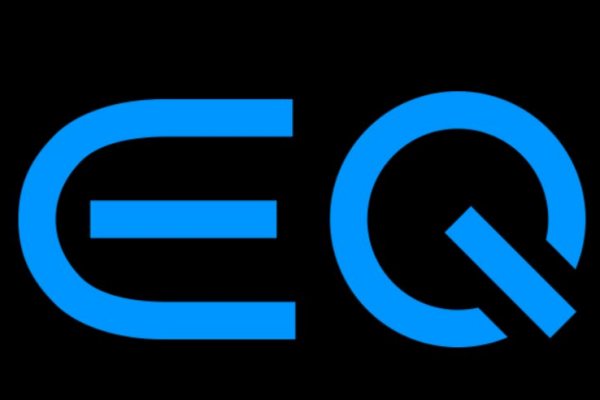
Environmentally friendly vehicles, especially hybrids and battery EVs are often categorized as green vehicles. Green is synonymous with trees, and therefore anything related to environmental preservation often carries the green banner. However, most hybrids and EVs don’t have any green badges on it. Instead, the common colour used on their eco-touting badges is blue. Did you ever wonder why?

Both BMW and Mercedes-Benz use blue for their respective i and EQ brands. Volkswagen too had for many years used the Think Blue tagline, with BlueMotion badges on its cars.
However post-Dieselgate, Volkswagen had to start from a clean slate, so it adopted a different blue-fuschia gradient colour scheme for its EV-only ID brand.

What about non-German brands then? Well, Japan’s hybrid leader Toyota uses blue. Up until 2022, all Toyota hybrid models launched since 2009 wear blue-tinted Toyota emblems, with blue Hybrid Synergy Drive badge at the rear and wave pattern Hybrid badges on the fenders.
This practice was only stopped recently, after the launch of the 2023 Toyota Prius, because for Toyota, hybrid is now mainstream (contributing 70 percent of sales in Western Europe) so there’s no longer a need to have separate brand identities for its hybrid models.
Also read: Future Toyota hybrids to drop blue logo, no longer present on 2023 Toyota Innova and Prius

It’s the same with Honda. The ‘e’ in its e:HEV logo is in blue. Similar to Toyota, hybrid variants of the City, City Hatchback, HR-V and Civic models wear blue-tinted emblems but like the Toyota bZ4X, the EV-only Honda E wears regular Honda emblems.

Honda’s 4-decade long effort to develop clean burning engines, hybrids, as well as zero emission battery EVs and fuel-cell electric vehicles are guided by Honda’s ‘Blue Skies for our children’ vision. Again, why blue skies and not green lands?
Even America’s Chevrolet use blue for its Bolt EV. Likewise for Ford, which use a blue lightning bolt badge on its EV models.

The reason behind many carmakers’ decision to shun green in favour of blue is obvious enough to anyone who has lived in the West, especially Europe, long enough, but it may not be so for our Malaysian readers.
In our part of the world, green is synonymous with Islam, specifically political Islam. In the West, green is also seen as a political colour but not in the way us in this part of the world understand it.

Instead of religion, green is associated with the radical, far-left Green Party that champions the cause of ecology, often using very confrontational and economically disruptive means to get attention. It’s not a group any progressive commercial entity, especially car companies, will want to be associated with.
This is why BMW, Mercedes-Benz, and VW don’t use a green logo on any of their green products.

In Germany, the Green Party is viewed by regular Germans in the same way many Malaysians view PAS. Nuremberg may have been the birth place of Christian reformation but in Germany, the lighting rod dividing public opinion is not religion but environmental (and immigration, but that’s another topic) policies.
Radical youth wings of the Green Party have a long history of disruptive protests at motor shows, confronting car drivers by blocking highways, doing blockades on critical roads linking ports and industrial zones by glueing themselves to the road, blocking airport operations, etc. These loud vegans also want to rid restaurants and wet markets of meat.
The Germans call the Green Party the Verbotspartei – the ‘Anti-Party Party’ – because Greens are anti-industries, anti-cars, anti-nuclear power stations, anti-meat (cattle farming emits greenhouse gases), anti-commercial fishing, anti-everything essential for modern life. It’s a party that is made of members whose head are in the clouds.
The Green Party is most established in Germany but they are also present in many countries outside of the European Union, including UK, USA, and Canada.
So why did car companies choose blue then? That’s because blue is seen as an inclusive colour. Blue is also the colour of the United Nations. Blue skies and blue seas are also synonymous with the environment as much as green.

Still, why should Japanese car makers like Honda and Toyota need to be bothered about this when the Green Party doesn’t exist in Japan? The simple answer is that these companies develop their products with the international market in mind, and Europe being one of the most environmentally conscious market, is a target export destination.
However, the decision by carmakers to use blue instead of green was made more than a decade ago, and the Green Party today is different from the Green Party in the ‘80s and ‘90s, so change may be coming.
For decades, the Green Party is seen as a loud but insignificant fringe party, whose members are made up of fringe individuals, many of whom are unemployed government handout recipients – basically comfortable Europeans on welfare aid with enough time on their hands to do unproductive things. This is no longer true today.
Today, the Green Party is part of Germany’s 3-party coalition government with the red Social Democrats Party (SPD) and yellow Free Democrats Party (FDP). “The Green is now Grey,” is what the Germans are saying. Others call it the ‘traffic light’ colours coalition government.

Like Malaysia, Germany too has been swept by a green wave, but unlike the situation in Malaysia, Germany’s green wave is not the result of some tide of radical conservatism sweeping the country.
Instead, the Green Party has matured, behaved less like ignorant idealists, and more like a responsible government, which made it more palatable to regular Germans, many of whom want to see a third option other than the dominant CDU-SPD duo.
In an effort to widen its appeal, the new leadership of the Green Party has gradually shifted themselves from the far-left to the more moderate centre-left position of the political spectrum. It has also distanced itself from the recent Just Stop Oil protestors, and other disruptions caused by climate activists, chiding protestors for their poorly targeted actions.
One of most difficult and controversial decision the Greens had to make after becoming government was to backtrack on Germany’s initial goal of phasing out nuclear power by 2022. Going nuclear-free is one of the fundamental goals of the Green Party and delaying that had lost the party many of its original supporters (but it also gained new supporters from the moderate centre).
Being in opposition is easy but after becoming government, the Greens soon realized that one cannot shutdown nuclear power stations without throwing the economy in disarray, because renewable energy, despite the many theoretical promises, cannot fill the gap in real-world energy demand.

On cars, the Green Party has also compromised on some of its earlier zeal to kill combustion engines for good. It now says that although it is backing the European Union’s ban on combustion engines by 2035, it is open to keeping engines alive if it runs on synthetic fuels – basically artificial petrol made from less carbon intensive methods.
Also read: Fearing China, EU may U-turn on 2035 combustion engine ban, Commissioner wants review in 2026
So who knows, perhaps in the coming decades, green cars can proudly wear a green badge without fear of being associated with radical ecomentalists.
Source: The politics of shunning green logos – why hybrids and EVs use blue, not green


More Stories
Optimizing Route Planning with Courier Software
Site Oficial Para Cassino Online At The Apostas No Brasil
Site Oficial Para Cassino Online At The Apostas No Brasil